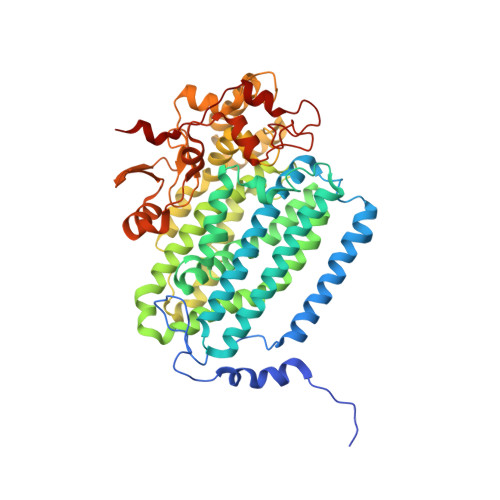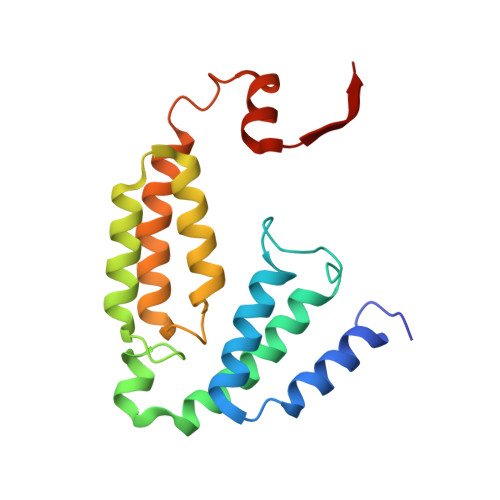Crystal structures of the soluble methane monooxygenase hydroxylase from Methylococcus capsulatus (Bath) demonstrating geometrical variability at the dinuclear iron active site.
Whittington, D.A., Lippard, S.J.(2001) J Am Chem Soc 123: 827-838
- PubMed: 11456616
- DOI: https://doi.org/10.1021/ja003240n
- Primary Citation of Related Structures:
1FYZ, 1FZ0, 1FZ1, 1FZ2, 1FZ3, 1FZ4, 1FZ5 - PubMed Abstract:
The oxidation of methane to methanol is performed at carboxylate-bridged dinuclear iron centers in the soluble methane monooxygenase hydroxylase (MMOH). Previous structural studies of MMOH, and the related R2 subunit of ribonucleotide reductase, have demonstrated the occurrence of carboxylate shifts involving glutamate residues that ligate the catalytic iron atoms. These shifts are thought to have important mechanistic implications. Recent kinetic and theoretical studies have also emphasized the importance of hydrogen bonding and pH effects at the active site. We report here crystal structures of MMOH from Methylococcus capsulatus (Bath) in the diiron(II), diiron(III), and mixed-valent Fe(II)Fe(III) oxidation states, and at pH values of 6.2, 7.0, and 8.5. These structures were investigated in an effort to delineate the range of possible motions at the MMOH active site and to identify hydrogen-bonding interactions that may be important in understanding catalysis by the enzyme. Our results present the first view of the diiron center in the mixed-valent state, and they indicate an increased lability for ferrous ions in the enzyme. Alternate conformations of Asn214 near the active site according to redox state and a distortion in one of the alpha-helices adjacent to the metal center in the diiron(II) state have also been identified. These changes alter the surface of the protein in the vicinity of the catalytic core and may have implications for small-molecule accessibility to the active site and for protein component interactions in the methane monooxygenase system. Collectively, these results help to explain previous spectroscopic observations and provide new insight into catalysis by the enzyme.
Organizational Affiliation:
Department of Chemistry, Massachusetts Institute of Technology, Cambridge, Massachusetts 02139, USA.



















